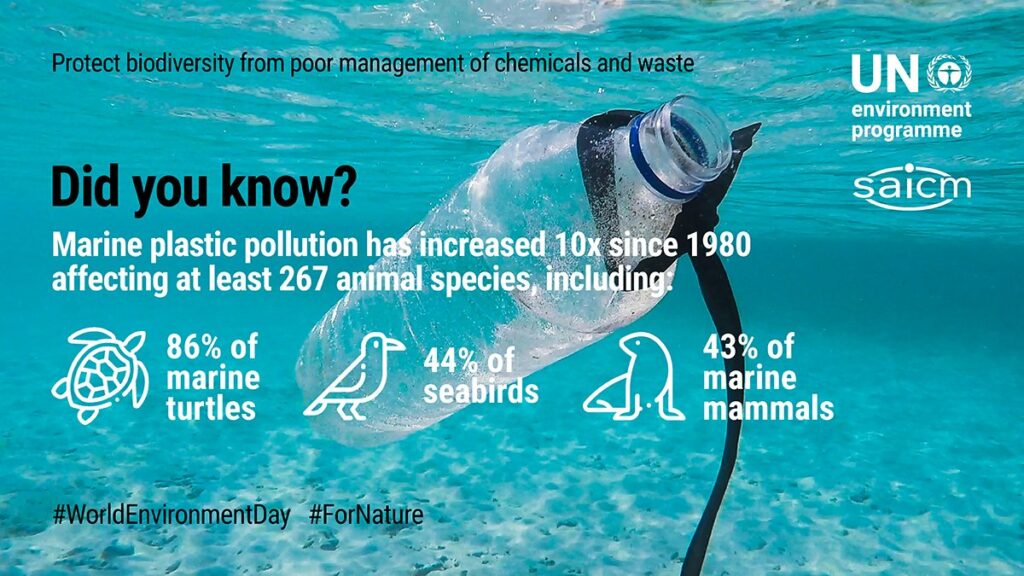
The EPA’s Plan to Limit Forever Chemicals
Introduction
Forever chemicals, known as PFAS, are commonly found in drinking water, and can be exceedingly difficult to remove. However, these chemicals can cause serious health problems from testicular cancer to preterm birth.
Image

Expert Analysis
The EPA’s plan to limit forever chemicals is expected to be costly, according to experts. However, this plan will protect millions of Americans from a host of health problems caused by these chemicals.
Sustainable Development Goals (SDGs)
- Goal 3: Good Health and Well-being – The EPA’s plan will contribute to the improvement of public health by reducing exposure to harmful forever chemicals.
- Goal 6: Clean Water and Sanitation – The plan aims to ensure the availability of clean and safe drinking water by addressing the issue of forever chemicals in water sources.
- Goal 12: Responsible Consumption and Production – By limiting forever chemicals, the EPA is promoting responsible production practices and protecting consumers from potential health risks.
- Goal 17: Partnerships for the Goals – The EPA’s plan requires collaboration between government agencies, industry stakeholders, and the public to effectively address the issue of forever chemicals.
Conclusion
The EPA’s plan to limit forever chemicals may come with a high cost, but it is a necessary step to protect the health and well-being of millions of Americans. By addressing the issue of these harmful chemicals, the plan aligns with several Sustainable Development Goals, including Goal 3, Goal 6, Goal 12, and Goal 17.
SDGs, Targets, and Indicators
-
SDG 6: Clean Water and Sanitation
- Target 6.1: By 2030, achieve universal and equitable access to safe and affordable drinking water for all.
- Indicator: Presence of forever chemicals (PFAS) in drinking water.
-
SDG 3: Good Health and Well-being
- Target 3.4: By 2030, reduce by one-third premature mortality from non-communicable diseases through prevention and treatment and promote mental health and well-being.
- Indicator: Health problems caused by forever chemicals, such as testicular cancer and preterm birth.
Analysis
The article highlights the issue of forever chemicals, known as PFAS, which are commonly found in drinking water and can be difficult to remove. These chemicals can cause serious health problems, including testicular cancer and preterm birth. Therefore, the article is connected to SDG 6: Clean Water and Sanitation, which aims to achieve universal access to safe drinking water. Specifically, Target 6.1 focuses on ensuring safe and affordable drinking water for all. The presence of forever chemicals in drinking water serves as an indicator to measure progress towards this target.
Additionally, the article addresses SDG 3: Good Health and Well-being. Target 3.4 aims to reduce premature mortality from non-communicable diseases and promote mental health and well-being. The health problems caused by forever chemicals, such as testicular cancer and preterm birth, align with this target. These health problems can be used as indicators to measure progress towards Target 3.4.
SDGs, Targets, and Indicators
| SDGs | Targets | Indicators |
|---|---|---|
| SDG 6: Clean Water and Sanitation | Target 6.1: By 2030, achieve universal and equitable access to safe and affordable drinking water for all. | Presence of forever chemicals (PFAS) in drinking water. |
| SDG 3: Good Health and Well-being | Target 3.4: By 2030, reduce by one-third premature mortality from non-communicable diseases through prevention and treatment and promote mental health and well-being. | Health problems caused by forever chemicals, such as testicular cancer and preterm birth. |
Behold! This splendid article springs forth from the wellspring of knowledge, shaped by a wondrous proprietary AI technology that delved into a vast ocean of data, illuminating the path towards the Sustainable Development Goals. Remember that all rights are reserved by SDG Investors LLC, empowering us to champion progress together.
Source: nationalgeographic.com

Join us, as fellow seekers of change, on a transformative journey at https://sdgtalks.ai/welcome, where you can become a member and actively contribute to shaping a brighter future.






